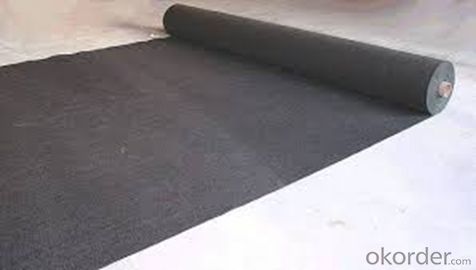- Understanding the Role of Geomembrane Liners in Waste Management
- Innovations in Geomembrane Liners for Water Management
- Geomembrane Liners: A Comprehensive Guide
- The Future of Geomembrane Liners in Civil Engineering
- Geomembrane Liners: Enhancing Landfill Stability
Manager:
WhatsApp:+86 177 0135 2670
Tel:+86 177 0135 2670
Email:marketing@okorder.com
Address:3rd Floor, No.2 Building, No.1 Sanlihe Road
The Use of Geomembrane Liners in Industrial Waste Disposal
Geomembrane liners, a crucial component in the management of industrial waste, have been the subject of much discussion and debate. These synthetic materials, often made from high-density polyethylene (HDPE), are designed to provide a barrier against the escape of contaminants into the surrounding environment. But what exactly are geomembrane liners, and how are they used in industrial waste disposal? Let's dive into the world of geomembranes and explore their role in protecting our planet.

The Basics of Geomembrane Liners
Geomembrane liners are large, continuous sheets of plastic that are laid down to create a waterproof barrier. They are typically used as a base layer in landfills, waste containment facilities, and other areas where waste materials are stored. The primary function of these liners is to prevent the migration of pollutants into the soil, groundwater, and surface water.
Why Geomembrane Liners Matter
The importance of geomembrane liners cannot be overstated. Industrial waste can contain a variety of harmful substances, including heavy metals, chemicals, and other toxic compounds. If these substances were to leach into the environment, they could cause significant damage to ecosystems, wildlife, and even human health. By using geomembrane liners, we can minimize the risk of such contamination.
How They're Made
The manufacturing process of geomembranes involves the use of polymers, which are then extruded into sheets. These sheets are tested for strength, durability, and resistance to chemicals and UV radiation. The quality of the geomembrane is crucial, as it needs to withstand the weight and pressure of the waste above it, as well as the elements.
Installation Process
Laying down a geomembrane liner is a meticulous process that requires careful planning and execution. The site must be prepared by clearing it of any debris, leveling the ground, and compacting the soil to create a stable base. Once the site is ready, the geomembrane is unrolled and carefully laid out, with seams welded together to ensure a seamless barrier.
Challenges and Solutions
Despite their benefits, geomembrane liners are not without their challenges. Issues such as punctures, leaks, and installation errors can compromise their effectiveness. However, these challenges can be mitigated through regular inspections, proper maintenance, and the use of advanced technologies like leak detection systems.
The Future of Geomembrane Liners
As we move towards a more sustainable future, the role of geomembrane liners in industrial waste disposal is only set to grow. With advancements in materials and construction techniques, we can expect to see even more robust and efficient liners in the coming years.
Personal Touch: A Call to Action
In conclusion, geomembrane liners play a vital role in our efforts to protect the environment from the harmful effects of industrial waste. It's up to all of us, from waste managers to policymakers, to ensure that these liners are used responsibly and effectively. Let's work together to create a cleaner, safer world for future generations.
- Previous:The Selection Criteria for High-Quality Geomembrane Liners
- Next:Geomembrane Liners: A Sustainable Choice for Modern Infrastructure
-
2024-12-05Geomembrane Liners: A Comprehensive Guide






